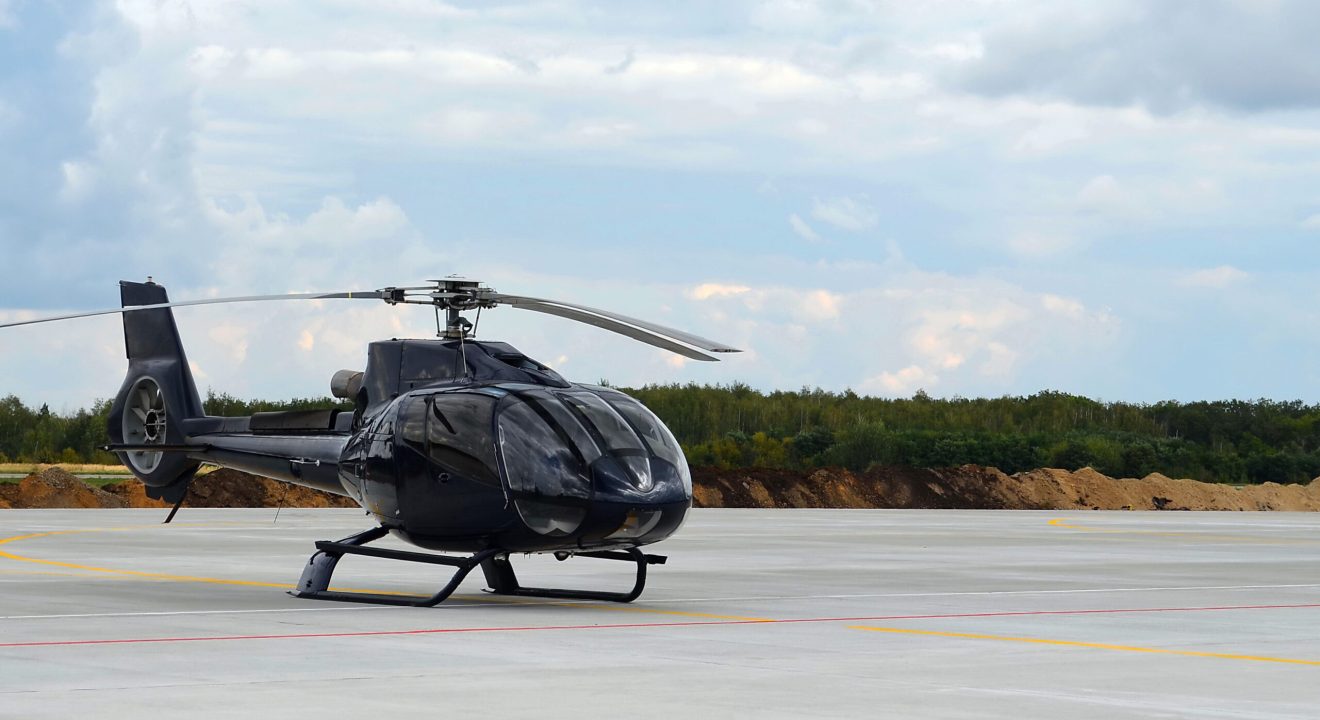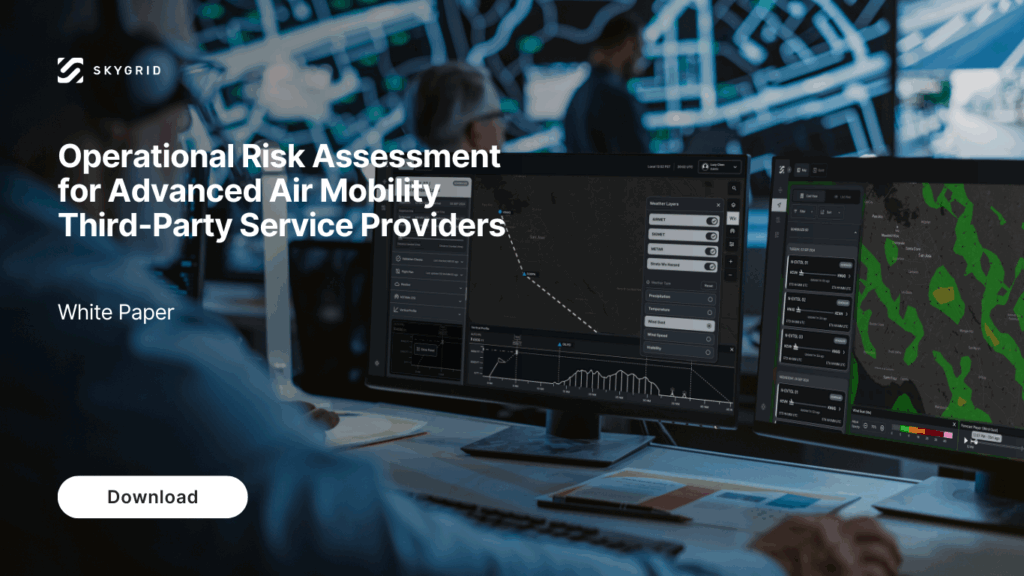Advanced Air Mobility (AAM) represents a transformative shift in aviation, introducing new aircraft, new operational paradigms, and new roles for digital infrastructure. With new technology comes new safety considerations.
SkyGrid’s latest whitepaper, Operational Risk Assessment for Advanced Air Mobility Third-Party Service Providers, examines how an Operational Risk Assessment (ORA) can help address the hidden safety gaps in AAM.
Current safety processes focus on a single aircraft, but with Advanced Air Mobility, Third-Party Service Providers (TSPs) will support multi-aircraft (m:N) operations, introducing new and sometimes hidden gaps in safety. Decentralizing traditional onboard functions and assigning them to ground-based systems for uncrewed aircraft requires new safety assessment methods.
Unlike traditional aviation operations, where onboard systems are designed and certified according to well-established safety standards, AAM will rely on offboard, decentralized services that do not yet have established safety standards. AAM operations require an added level of safety to ensure successful integration into the National Airspace System (NAS). This added level of safety calls for the evolution of safety analyses to be broadened to include these new kinds of operations.
The Hidden Safety Gaps
AAM introduces m:N operations, and TSPs may be responsible for providing information to many aircraft from a single point. If a TSP system experiences a safety-related system failure, the implications may affect a multitude of aircraft in the airspace, which may lose all or partial access to the information or be fed erroneous or inaccurate information.
Uncrewed operations will see the removal of the pilot from the cockpit to the ground, either through supervised ground-based pilot control or eventually, autonomous algorithmic control. Shifting the pilot to the ground also means a level of mitigation is lost if, for example, the onboard pilot needs to take over the autopilot, since there is no visual awareness directly in the sky. TSP systems will be part of replacing the pilots’ onboard functions in a way that is as safe or safer than before and must recreate situational awareness for them on the ground.
Key flight functions will also be moved to the ground, so ground-based systems need to remain in connection with uncrewed aircraft at all times. The safety criticality of these functions means advancements in aircraft and TSP technology must be made to ensure continuous connection and availability of these ground-based systems.
These and other changes to the air transportation norm introduce inherent safety risks that will become hidden safety gaps if left unaddressed. Legacy risk assessment methods never had to analyze these features because they did not yet exist. Now, these deltas must be identified so the risk assessment process can be updated to include coverage of new air transportation functionality. Without updated risk assessment methods, the industry risks fragmented accountability, inconsistent safety oversight, and undetected operational hazards.
Using an ORA to Complement Existing Methods
New technology in the airspace means new behaviors. Within the new AAM ecosystem, adequate verification and validation methods to certify that the latest technology is safe don’t exist yet. Current aerospace industry-standard Society of Automotive Engineers (SAE) Aerospace Recommended Practices do not reference distributed digital systems provided by TSPs, and potentially incomplete assessments expose the ecosystem to new safety gaps.
SkyGrid proposes using an ORA alongside existing safety assessment methods to evaluate TSP safety and help verify that these technologies are safe enough to use in the airspace. An ORA is a structured framework designed to assess and mitigate risks associated in AAM operations. Unlike traditional safety assessments that focus on isolated systems, an ORA examines the broader ecosystem, including operational interactions, data integrity, and risk propagation between TSPs and multiple aircraft.
When conducting safety analyses across the interconnected AAM ecosystem, boundaries of responsibility among stakeholders often become blurred. TSPs touch multiple stakeholders, and without clearly defined boundaries, safety teams risk creating gaps in their safety analyses where critical hazards could go unaddressed because no entity recognized them as their responsibility.
An ORA framework addresses this challenge by establishing explicit areas of responsibility for different entities, ensuring comprehensive safety coverage across the entire ecosystem. By providing structured guidance and defining areas of control, an ORA prevents safety considerations from slipping through the cracks due to fragmented accountability, ensuring that safety considerations are not overlooked.
TSPs will be critical to AAM operations, but current aviation safety frameworks don’t fully cover their risks. An Operational Risk Assessment provides a structured, ecosystem-wide approach to evaluating TSP safety. Learn more in the white paper about addressing hidden safety gaps with an ORA.

